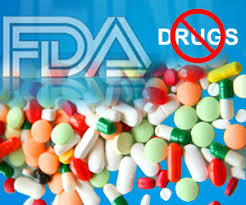The Food and Drug Administration is responsible for protecting public health by ensuring the safety, efficacy, and security of human and veterinary drugs, biological products, and medical devices; and by ensuring the safety of our nation’s food supply, cosmetics, and products that emit radiation. It is the duty of the U.S. Food and Drug Administration to approve drugs by evaluating their safety and efficacy in respective indications. When you come to the United States with medications, you fall under the authority of the FDA, U.S. Customs and Border Protection (CBP), and the Transportation Security Administration (TSA) agents operating the nation’s airports. There are varying restrictions, and different agencies may have other requirements or jurisdiction over a product. So check with each agency before you plan to travel with medications into the country.
In general, you should have with you a valid prescription or doctor’s note—written in English—to bring medication to the U.S. The medication should be in its original container with the doctor’s instructions printed on the bottle. If you don’t have the original container, bring a copy of your prescription or a letter from your doctor explaining your condition and why you need this medication. Travel with no more than you need for your personal use during your stay. A rule of thumb: Bring no more than a 90-day supply of medication.
If you’re staying longer than 90 days, you may have additional medication sent to you by mail or courier. Include documentation showing that the medication is being sent for your own use while visiting the United States. This documentation may include a copy of your visa and passport, a letter from your doctor, and a copy of your prescription (in English).
The FDA does not permit personal importation of unapproved versions of FDA-approved drugs from foreign countries. FDA cannot assure that foreign-made versions of FDA-approved drugs have been properly manufactured, are safe and effective, and are the same formulation as the FDA-approved versions. If you’re traveling to the United States from another country and need a prescription filled, you should visit a health care provider. Very few pharmacies can fill a foreign prescription, and this is determined on a state-by-state basis.
It’s illegal for people to import drugs into the United States for personal use. That’s because drugs available in other countries haven’t been evaluated or approved by FDA for use or sale in the U.S., so we can’t ensure that they’re safe and effective. FDA generally considers such drugs unapproved.
FDA understands that there are cases in which someone may need treatment with a foreign drug that’s not available in the U.S. and there are no other U.S. medicines available to treat the condition. FDA’s Personal Importation Policy provides instructions for FDA personnel relating to the personal importation of drugs that may be illegal in the United States. FDA considers the following when reviewing such an application:
- The drug is for a serious condition for which there is no effective treatment available in the U.S.
- There is no marketing or promotion of the drug to U.S. residents.
- The drug doesn’t represent an unreasonable health risk.
- You verify in writing that you’re importing the drug for your own personal use.
- You have a letter, written in English, from your doctor saying the drug is a continuation of treatment that began outside the United States or you provide the name and address of a U.S. licensed physician who will supervise your use of the foreign drug. The letter should accompany the package and be addressed to a Customs and Border Protection officer or broker.
- You’re not importing more than a three-month supply of the drug.
If the medicine is sent through the mail, Customs might detain it until an FDA inspector can examine it. This could take as long as a month. To speed things along, make sure the outside package is marked and states that it contains a letter to the CBP officer or broker. The best option is to send the package by a courier service and flag it so the U.S. Customs broker will alert FDA inspectors about the special circumstances for sending the package.
Significant withdrawals:
| Drug Name | Withdrawn | Reason of Withdraw |
| Thalidomide | 1950s–1960s | Withdrawn due to the risk of teratogenicity; returned to the market for use in leprosy and multiple myeloma under FDA orphan drug rules |
| Lysergic acid diethylamide (LSD) | 1950s–1960s | Marketed as a psychiatric drug; withdrawn after it became widely used recreationally |
| Diethylstilbestrol | 1970s | Withdrawn due to the risk of teratogenicity |
| Phenformin and Buformin | 1978 | Withdrawn due to the risk of lactic acidosis |
| Ticrynafen | 1982 | Withdrawn due to the risk of hepatitis |
| Zimelidine | 1983 | Withdrawn worldwide due to the risk of Guillain-Barré syndrome |
| Phenacetin | 1983 | An ingredient in “A.P.C.” tablet; withdrawn due to the risk of cancer and kidney disease |
| Methaqualone | 1984 | Withdrawn due to the risk of addiction and overdose |
| Nomifensine (Merital) | 1986 | Withdrawn due to the risk of hemolytic anemia |
| Triazolam | 1991 | Withdrawn in the United Kingdom because of risk of psychiatric adverse drug reactions. This drug continues to be available in the U.S. |
| Terodiline (Micturin) | 1991 | Prolonged QT interval |
| Temafloxacin | 1992 | Withdrawn in the United States because of allergic reactions and cases of hemolytic anemia, leading to three patient deaths. |
| Flosequinan (Manoplax) | 1993 | Withdrawn in the United States because of an increased risk of hospitalization or death |
| Alpidem (Ananxyl) | 1996 | Withdrawn because of rare but severe hepatotoxicity. |
| Chlormezanone (Trancopal) | 1996 | Withdrawn because of rare but serious cases of toxic epidermal necrolysis |
| Fen-phen (popular combination offenfluramine and phentermine) | 1997 | Phentermine remains on the market, dexfenfluramine and fenfluramine – later withdrawn as caused heart valve disorder |
| Tolrestat (Alredase) | 1997 | Withdrawn because of risk of severe hepatotoxicity |
| Terfenadine (Seldane, Triludan) | 1998 | Withdrawn because of risk of cardiac arrhythmias; superseded by fexofenadine |
| Mibefradil (Posicor) | 1998 | Withdrawn because of dangerous interactions with other drugs |
| Etretinate | 1990s | Risk of birth defects; narrow therapeutic index |
| Tolcapone (Tasmar) | 1998 | Withdrawn because of risk of Hepatotoxicity |
| Temazepam (Restoril, Euhypnos, Normison, Remestan, Tenox, Norkotral) | 1999 | Withdrawn in Sweden and Norway because of diversion, abuse, and a relatively high rate of overdose deaths in comparison to other drugs of its group. This drug continues to be available in most of the world including the U.S. but under strict controls. |
| Astemizole (Hismanal) | 1999 | Arrhythmias because of interactions with other drugs |
| Grepafloxacin (Raxar) | 1999 | Prolonged QT interval |
| Levamisole (Ergamisol) | 1999 | Still used as a veterinary drug; in humans was used to treat melanoma before it was withdrawn for agranulocytosis |
| Troglitazone (Rezulin) | 2000 | Withdrawn because of risk of hepatotoxicity; superseded by pioglitazone and rosiglitazone |
| Alosetron (Lotronex) | 2000 | Withdrawn because of risk of fatal complications of constipation; reintroduced 2002 on a restricted basis |
| Cisapride (Propulsid) | 2000s | Withdrawn in many countries because of risk of cardiac arrhythmias |
| Amineptine (Survector) | 2000 | Withdrawn because of hepatotoxicity, dermatological side effects, and abuse potential. |
| Phenylpropanolamine (Propagest, Dexatrim) | 2000 | Withdrawn because of the risk of stroke in women under 50 years of age when taken at high doses (75 mg twice daily) for weight loss. |
| Trovafloxacin (Trovan) | 2001 | Withdrawn because of risk of liver failure |
| Cerivastatin (Baycol, Lipobay) | 2001 | Withdrawn because of risk of rhabdomyolysis |
| Rapacuronium (Raplon) | 2001 | Withdrawn in many countries because of risk of fatal bronchospasm |
| Rofecoxib (Vioxx) | 2004 | Withdrawn because of risk of myocardial infarction |
| Co-proxamol (Distalgesic) | 2004 | Withdrawn in the UK due to overdose dangers. |
| mixed amphetamine salts (Adderall XR) | 2005 | Withdrawn in Canada because of risk of stroke. See Health Canada press release. The ban was later lifted because the death rate among those taking Adderall XR was determined to be no greater than those not taking Adderall. |
| hydromorphone extended-release (Palladone) | 2005 | Withdrawn because of a high risk of accidental overdose when administered with alcohol |
| Thioridazine (Melleril) | 2005 | Withdrawn from U.K. market because of cardiotoxicity |
| Pemoline (Cylert) | 2005 | Withdrawn from U.S. market because of hepatotoxicity |
| Natalizumab (Tysabri) | 2005–2006 | Voluntarily withdrawn from U.S. market because of risk of Progressive multifocal leukoencephalopathy (PML). Returned to market July 2006. |
| Ximelagatran (Exanta) | 2006 | Withdrawn because of the risk of hepatotoxicity (liver damage). |
| Pergolide (Permax) | 2007 | Voluntarily withdrawn in the U.S. because of the risk of heart valve damage. Still available elsewhere. |
| Tegaserod (Zelnorm) | 2007 | Withdrawn because of imbalance of cardiovascular ischemic events, including heart attack and stroke. Was available through a restricted access program until April 2008. |
| Aprotinin (Trasylol) | 2007 | Withdrawn because of increased risk of complications or death; permanently withdrawn in 2008 except for research use |
| Inhaled insulin (Exubera) | 2007 | Withdrawn in the UK due to poor sales caused by national restrictions on prescribing, doubts over long term safety, and too high a cost |
| Lumiracoxib (Prexige) | 2007–2008 | Progressively withdrawn around the world because of serious side effects, mainly liver damage |
| Rimonabant (Acomplia) | 2008 | Withdrawn around the world because of risk of severe depression and suicide |
| Efalizumab (Raptiva) | 2009 | Withdrawn because of increased risk of progressive multifocal leukoencephalopathy; to be completely withdrawn from the market by June 2009 |
| Sibutramine (Reductil/Meridia) | 2010 | Withdrawn in Europe, Australasia, Canada, and the U.S. because of increased cardiovascular risk |
| Gemtuzumab ozogamicin (Mylotarg) | 2010 | Withdrawn in the U.S. due to increased risks of veno-occlusive disease and based on results of a clinical trial in which it showed no benefit in acute myeloid leukemia (AML) |
| Rosiglitazone (Avandia) | 2010 | Withdrawn in Europe due to increased risk of heart attacks and death. This drug continues to be available in the U.S. |
| Drotrecogin alfa (Xigris) | 2011 | Withdrawn by Lily worldwide following results of the PROWESS-SHOCK study that showed lack of efficacy (not because of toxicity like other drugs that have been withdrawn). |
Nimsulide is also banned in some countries like India, Japan, Finland, Spain, Turkey, Israel, and Sri Lanka due to increased chances of hepatotoxicity. Due to this, Nimsulide has not yet been approved by FDA. SEE: Adverse Drug Reaction Definition By World Health Organization






